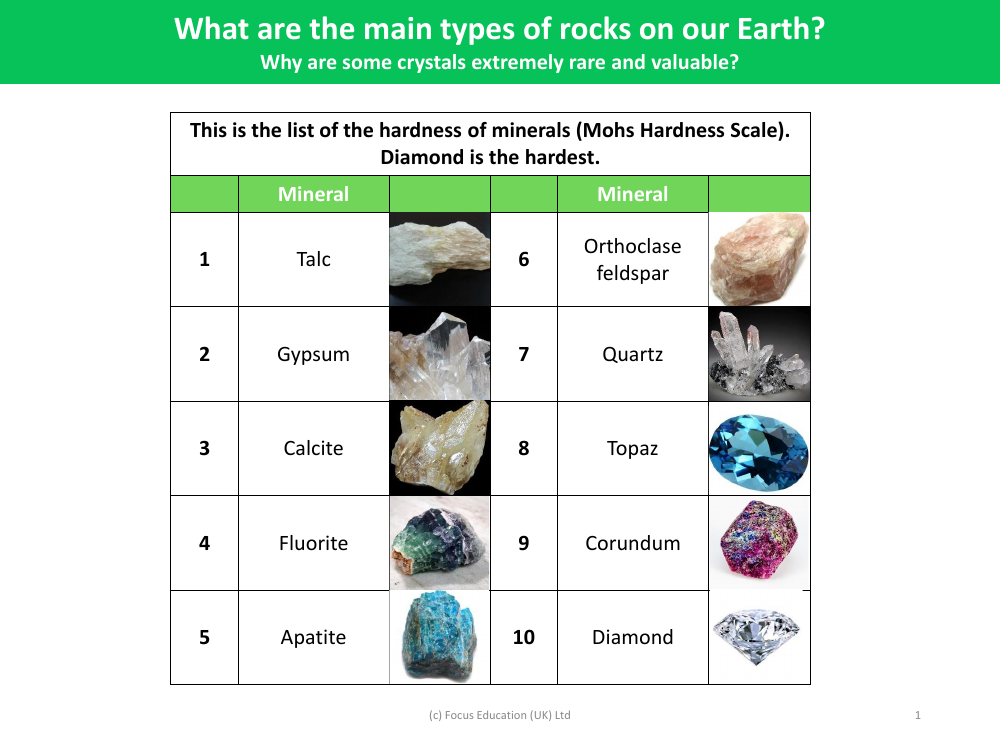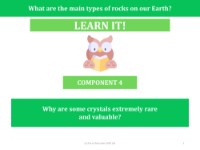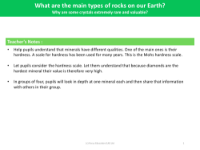Hardness list

Science Resource Description
The Mohs Hardness Scale is a comparative guide used to distinguish the hardness of minerals by their ability to scratch one another. At the top of the scale, with a hardness rating of 10, diamond is acknowledged as the hardest mineral, renowned for its unparalleled durability and resistance to scratching. The scale begins with talc, assigned the lowest rating of 1, indicating its softness. Other minerals are ranked accordingly, with gypsum at 2, calcite at 3, fluorite at 4, and apatite at 5. Moving up the scale, orthoclase feldspar is rated as 6, followed by quartz at 7, topaz at 8, and corundum at 9, each mineral showcasing a higher resistance to scratching than the last. This scale is instrumental for geologists and gemologists in identifying minerals and understanding their properties.
Our Earth's crust is predominantly composed of three main types of rocks: igneous, sedimentary, and metamorphic. Igneous rocks form from the solidification of molten magma or lava, sedimentary rocks are created by the accumulation and cementation of mineral particles or organic matter, and metamorphic rocks arise from the transformation of existing rock types under conditions of high pressure and temperature. The rarity and value of some crystals are influenced by several factors, including their scarcity, the conditions under which they form, the demand in the market, and their aesthetic qualities such as colour, clarity, and form. These exceptional characteristics make certain crystals highly sought after for both industrial applications and as gemstones in jewellery.



